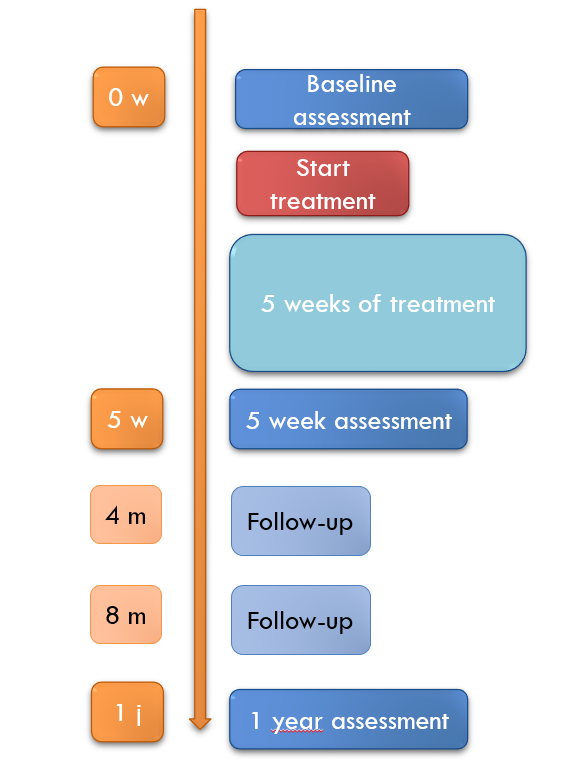
Meet Tim: he is an 8-year-old boy, living in the Netherlands with his parents and younger sister. A couple of years ago, Tim was diagnosed with Attention Deficit Hyperactivity/Impulsivity Disorder (ADHD). His psychologist recommended to participate in the TRACE study: this study examines the short- and long-term effects of dietary treatments in children with ADHD. In addition, the TRACE-BIOME study examines the underlying mechanisms of a dietary treatment. For this, we collect blood, stool and saliva samples and we perform a fMRI. These measurements might, among other things, shed light on the role of the brain-gut-axis.
But what’s it like to participate in a clinical trial? First of all, Tim was allocated to one of the two TRACE dietary treatments: an elimination diet or a healthy diet. Tim was allocated to the elimination diet. If we want to know if this diet is effective for Tim, we have to do a lot of different assessments (Figure 1).

Figure 1: assessments TRACE study
Before the baseline, 5 week and 1-year assessments, a couple of measurements already take place:
- Tim wears an Actigraph one week before the assessment, which measures motor activity and sleep-wake rhythm;
- Parents collect a stool sample from Tim in which his microbiota can be assessed;
- Parents and teachers fill out different questionnaires about Tim’s behavior, but also about for example parenting styles;
- Parents keep track of a food diary: what does Tim eat during two weekdays and one weekend day?
Before starting the elimination diet, Tim’s parents have a consult with one of the TRACE dieticians, so that they can prepare to change the diet of Tim. Then, it is time for the baseline assessment. Tim and his mother meet the researcher at the hospital for the blood venipuncture. He also has to chew on a cotton pad to collect a saliva sample. After this, they walk to Karakter which is a center for Child and Adolescent Psychiatry. The researcher measures his weight, length, blood pressure and heart rate. Next, Tim has to perform a task on the laptop which he really likes! This task assesses cognitive functions such as sustained attention, working memory and cognitive flexibility. After the computer task, there is time for a break. Next, they start with behavioural observation. In this task, Tim first plays with his mother and then with the researchers. The different tasks try to elicit ADHD symptoms and emotion (dys)regulation behavior. Finally, the MRI researcher takes Tim and his mother to the fMRI scanner in which he has to do two different tasks. All in all, the assessment takes about 4 hours.
After 5 weeks of the diet, it is time for the second assessment which is the same as the baseline assessment. The researcher has calculated, based on the parent and teacher questionnaires, if there is a significant response to the diet. Tim shows a 40% reduction in ADHD symptoms, which is a significant response! Therefore, they continue the diet. After 4 and 8 months of the diet, his parents receive some online questionnaires. Finally, after one year they are invited for the final assessment, which is again the same as the baseline assessment (without the fMRI).
